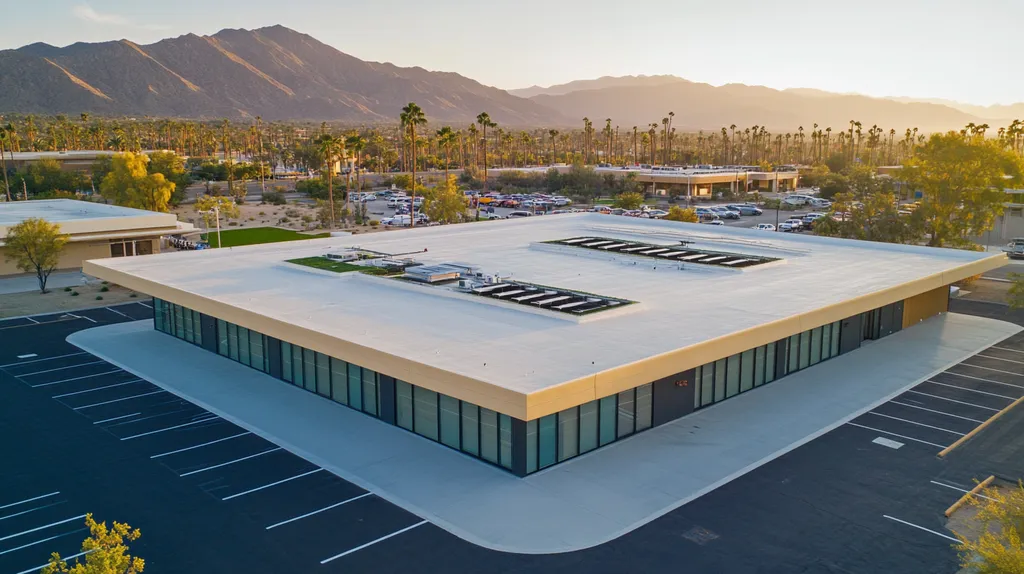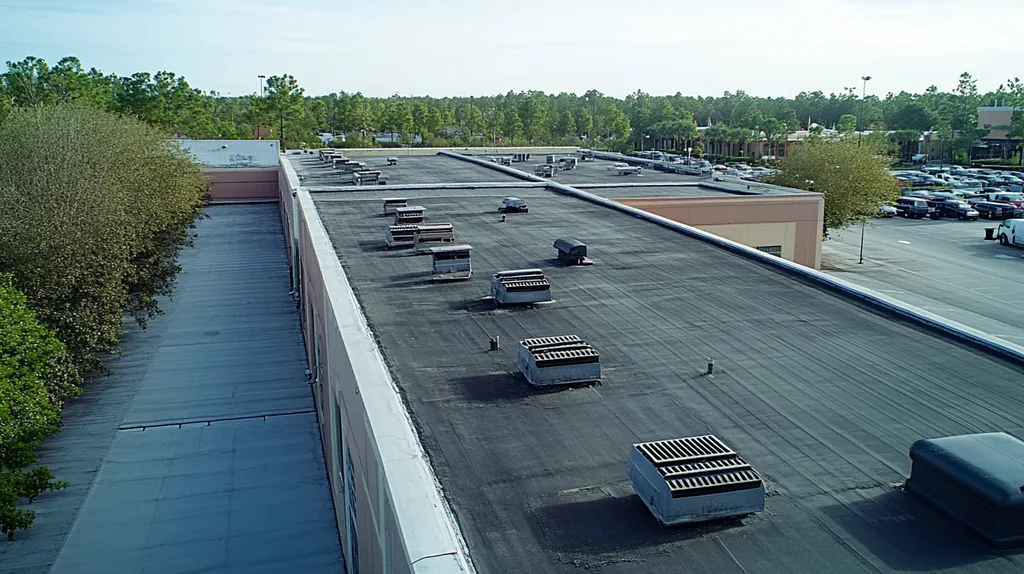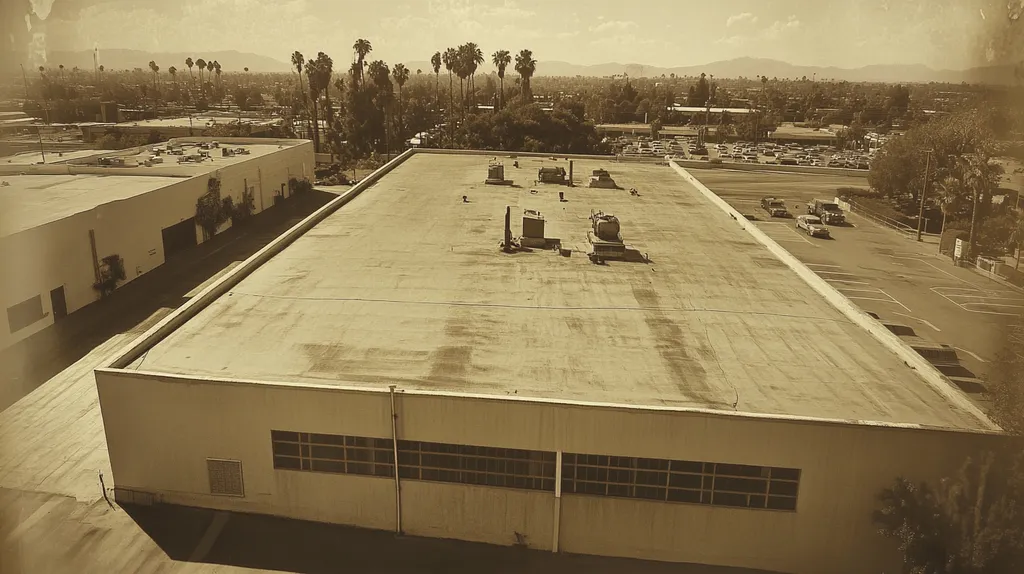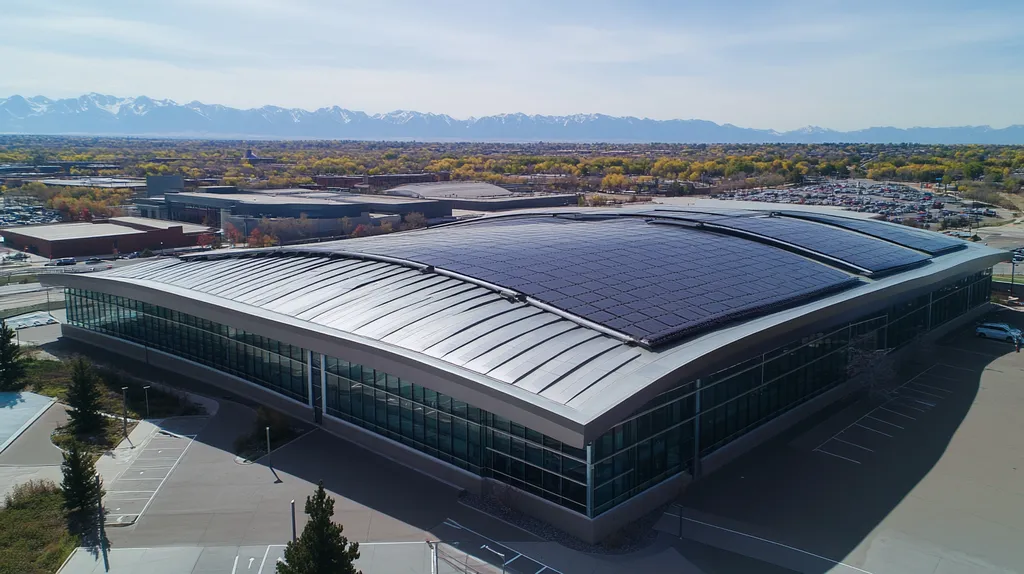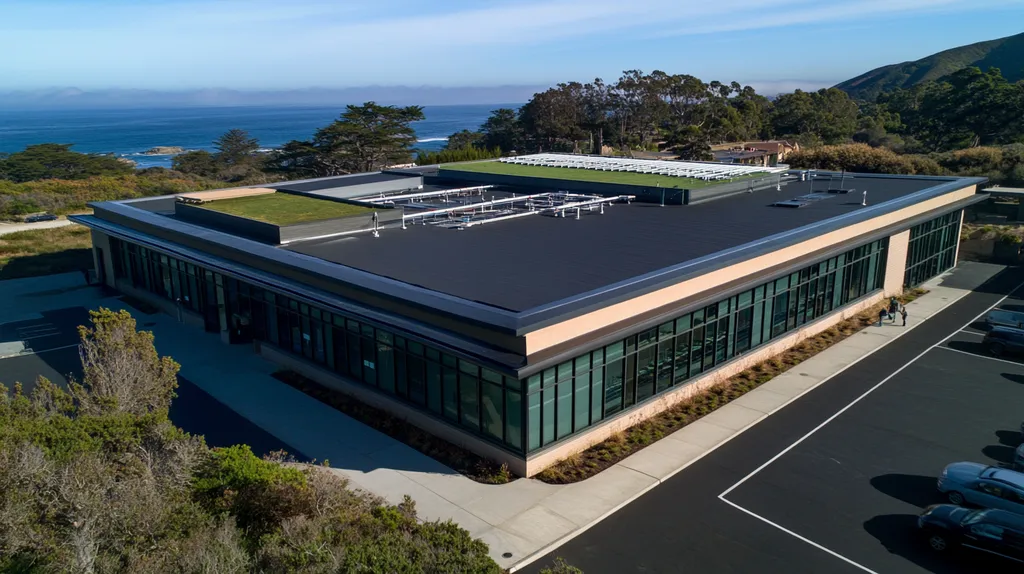Welcome to today’s Battle Royale featuring two roofing heavyweights: “Aluminum Coatings” in the east corner versus “Reflective Paints” in the west!
Tonight’s showdown pits these contenders against each other across six punishing rounds designed to test every aspect of their performance for Commercial Roof Climate Advantage.
At stake? Millions in potential costs, decades of building protection, and the critical performance demands of modern commercial and industrial facilities.
Our professional judging panel will evaluate each round on technical merit, real-world performance, and value delivery. After all six rounds, we’ll declare our ultimate champion.
Ladies and gentlemen, facility managers and building owners… it’s time to rumble!
ROUND 1: INITIAL COSTS & INSTALLATION
When evaluating commercial roofing solutions, initial costs and installation considerations can make or break a project’s success. The selection between aluminum coatings and reflective paints impacts not only immediate budgets but also long-term facility operations. Property managers must carefully weigh these factors, as installation decisions directly affect building performance and maintenance requirements for years to come.
Material Expenses
Material costs represent a significant portion of any commercial roofing project’s budget. While aluminum coatings command higher initial prices, typically ranging 30-40% more than standard reflective paints, their enhanced durability and performance characteristics justify the investment.
Reflective paints offer an attractive entry point for budget-conscious facility managers. Their lower material costs make them appear economical at first glance, but this advantage diminishes when considering lifecycle costs.
The superior weather resistance and longer service life of aluminum coatings translate to reduced replacement frequency and lower total ownership costs. This durability factor gives aluminum coatings the clear “ADVANTAGE” in material value despite higher upfront expenses.
Installation Complexity
The installation process for aluminum coatings demands precise surface preparation and application techniques. These coatings require specialized equipment and experienced crews to ensure proper adhesion and uniform coverage.
Reflective paints feature simpler application requirements and can be installed by a broader range of contractors. This accessibility often results in faster project completion and lower labor costs.
While reflective paints offer easier installation, the superior performance and reduced risk of application errors make aluminum coatings the better long-term choice. The quality assurance provided by professional installation gives aluminum coatings the “ADVANTAGE” in this category.
Project Timeline
Installation timelines significantly impact facility operations and overall project costs. Aluminum coating applications typically require additional preparation steps and longer curing periods, extending the total project duration by 25-35% compared to reflective paints.
Reflective paint projects can often be completed more quickly, minimizing disruption to building operations. Their rapid application and shorter curing times allow for faster project completion.
Despite the longer installation period, aluminum coatings’ superior longevity and reduced maintenance requirements offer greater value over time. This gives aluminum coatings the “ADVANTAGE” in overall project efficiency.
ROUND 1 WINNER: Aluminum Coatings
ROUND 2: DURABILITY & LIFESPAN
The durability and lifespan of roofing coatings directly impact a facility’s operational costs and maintenance requirements. A compromised coating system can lead to accelerated deterioration, energy inefficiency, and potential structural damage that could cost hundreds of thousands in repairs.
Resilience to Environmental Stressors
Aluminum roof coatings create a protective barrier that shields commercial roofs from weather damage, UV radiation, and microbial growth. These coatings form a durable polymer resin layer that maintains its protective properties even under harsh conditions. (source: Integris Roofing)
The metallized surface of aluminum coatings provides superior resistance to thermal cycling and oxidation. This stability prevents the micro-cracking and degradation that often plague other coating types.
Reflective paints offer basic UV protection but can degrade more rapidly when exposed to prolonged environmental stress. Their organic components are more susceptible to chemical breakdown and physical wear.
Given their superior defensive properties and longer-lasting protection, aluminum coatings earn the clear “ADVANTAGE” in environmental resilience.
Maintenance Requirements
Proper maintenance protocols significantly influence coating performance and longevity. Aluminum coatings typically require only annual inspections and basic cleaning to maintain their protective qualities.
The durable surface of aluminum coatings resists impact damage and abrasion from routine maintenance traffic. Minor scratches or wear patterns rarely compromise the coating’s protective function.
Reflective paints demand more frequent inspection and maintenance interventions. Surface damage often requires immediate attention to prevent moisture infiltration and coating failure.
The reduced maintenance burden and superior damage resistance give aluminum coatings the “ADVANTAGE” in this category.
Service Life Expectations
Service life directly affects the total cost of ownership for commercial roofing systems. Properly installed aluminum coatings regularly achieve 20-25 year lifespans with minimal degradation of protective properties.
This extended service life reduces disruption to facility operations and minimizes the frequency of major coating projects. The durability of aluminum coatings provides predictable performance throughout their lifecycle.
Reflective paints typically require replacement or significant restoration every 5-7 years. This shorter lifespan increases both direct costs and operational disruptions for facility managers.
The substantial difference in service life expectations gives aluminum coatings the clear “ADVANTAGE” in long-term performance.
ROUND 2 WINNER: Aluminum Coatings
ROUND 3: PERFORMANCE FACTORS
Performance factors in commercial roofing directly impact building operations, energy costs, and long-term facility maintenance. Climate-specific considerations can mean the difference between a roof that protects and performs for decades versus one that fails prematurely. Understanding how different coating systems respond to regional weather patterns helps facility managers make informed decisions that affect their bottom line.
Climate Adaptability
Different climates place unique demands on commercial roofing systems. Aluminum coatings excel in cold-climate applications where thermal cycling and moisture resistance are critical factors. These coatings maintain their protective properties even during dramatic temperature swings.
Aluminum coatings reflect up to 76% of solar radiation while providing excellent UV and weather protection for the underlying roof membrane. This makes them particularly effective for warehouses and facilities with minimal cooling requirements. (source: Western Colloid)
Reflective paints show diminished performance in cold climates where freeze-thaw cycles can compromise coating integrity. Their effectiveness also decreases significantly in areas with high precipitation or frequent temperature fluctuations.
The superior climate adaptability and consistent performance give aluminum coatings the clear “ADVANTAGE” in this category.
Thermal Performance
Thermal performance directly affects building energy consumption and internal comfort. Aluminum coatings create a highly effective thermal barrier that reduces heat transfer in both summer and winter conditions.
The metallic composition of aluminum coatings provides consistent thermal protection throughout their service life. This stability helps maintain predictable building temperatures and reduces HVAC system strain.
Reflective paints offer initial thermal benefits but can lose effectiveness as their surface degrades. Their thermal performance often diminishes significantly within the first few years of installation.
The long-term thermal stability and consistent performance give aluminum coatings the “ADVANTAGE” in thermal management.
Weather Resistance
Weather resistance determines how well coating systems maintain their protective properties under various conditions. Aluminum coatings form a robust barrier against rain, snow, and UV exposure while resisting physical damage from hail and debris.
The metallic properties of aluminum coatings provide superior protection against moisture infiltration. Their seamless surface prevents water pooling and reduces the risk of leaks.
Reflective paints are more susceptible to weather-related degradation and often show signs of wear within a few years. Their organic components break down faster under prolonged exposure to elements.
The superior weather resistance and durability give aluminum coatings the “ADVANTAGE” in this category.
ROUND 3 WINNER: ALUMINUM COATINGS
ROUND 4: MAINTENANCE REQUIREMENTS
Maintenance requirements significantly impact the total cost of ownership for commercial roofing systems. Industry data shows that inadequate maintenance can reduce a roof’s service life by up to 60% while increasing energy costs by 20-30%. Understanding the maintenance differences between aluminum coatings and reflective paints helps facility managers optimize their roof performance and protect their investment.
Routine Inspection Requirements
Regular inspections are crucial for identifying and addressing potential roofing issues before they escalate into major problems. The frequency and scope of these inspections directly affect maintenance budgets and facility operations.
Aluminum coatings typically require only semi-annual inspections to maintain their protective qualities. Their durable surface resists deterioration and makes damage patterns easily visible during routine checks.
Reflective paints demand quarterly inspections due to their susceptibility to UV degradation and surface wear. Their organic components require more frequent monitoring to maintain reflective properties.
The reduced inspection frequency and easier damage assessment give aluminum coatings the clear “ADVANTAGE” in this category.
Cleaning and Surface Maintenance
Surface cleanliness directly impacts coating performance and energy efficiency. Commercial roof coatings can significantly improve building energy efficiency through proper maintenance of their reflective properties. (source: Coler Roofing)
Aluminum coatings maintain their reflective properties with minimal cleaning intervention. Their metallic surface naturally resists dirt accumulation and typically requires only annual cleaning to maintain performance.
Reflective paints need frequent cleaning to preserve their solar reflectance. Their textured surface tends to trap debris and may require monthly cleaning in dusty environments.
The superior self-cleaning properties and reduced maintenance requirements give aluminum coatings the “ADVANTAGE” in this category.
Repair and Restoration Needs
The frequency and complexity of repairs significantly impact long-term maintenance costs. Understanding repair requirements helps facility managers budget effectively for ongoing maintenance.
Aluminum coatings rarely require spot repairs due to their superior durability. When repairs are needed, they can usually be completed with simple patch applications that maintain coating integrity.
Reflective paints often need extensive touch-ups and periodic recoating to maintain their protective properties. Their susceptibility to physical damage increases repair frequency and complexity.
The minimal repair requirements and simpler restoration processes give aluminum coatings the “ADVANTAGE” in this category.
ROUND 4 WINNER: Aluminum Coatings
ROUND 5: SUSTAINABILITY CREDENTIALS
Sustainability credentials have become critical factors in commercial roofing decisions, directly impacting both environmental responsibility and operating costs. With energy costs rising 15-25% annually in many regions, choosing the right roof coating can mean the difference between sustainable operations and escalating expenses. Property owners must evaluate how different coating options affect their facility’s environmental footprint and long-term operational viability.
Energy Efficiency
Commercial roof coatings significantly impact building energy consumption and HVAC system performance. Aluminum coatings maintain consistent reflectivity throughout their service life, reflecting up to 85% of solar radiation and reducing cooling loads by 20-30%. These coatings also provide excellent insulation properties during winter months.
Commercial roof coatings can significantly improve building energy efficiency through enhanced reflective properties and reduced heat absorption. (source: Coler Roofing)
Reflective paints show strong initial performance but experience significant degradation over time. Their reflectivity often drops below 60% within the first three years, requiring recoating to maintain energy efficiency benefits.
The superior long-term reflectivity and consistent performance give aluminum coatings the clear “ADVANTAGE” in energy efficiency.
Material Sustainability
The environmental impact of roofing materials extends beyond their immediate application. Aluminum coatings contain minimal volatile organic compounds (VOCs) and are often produced using recycled materials, reducing their carbon footprint.
These coatings create a durable protective layer that extends the life of underlying roofing materials by 15-20 years. This longevity significantly reduces waste and the need for replacement materials.
Reflective paints typically require more frequent replacement and often contain higher levels of VOCs. Their shorter lifespan results in increased material consumption and waste generation.
The reduced environmental impact and superior material conservation give aluminum coatings the “ADVANTAGE” in this category.
Life Cycle Assessment
Life cycle assessment evaluates the total environmental impact from production through disposal. Aluminum coatings demonstrate superior durability with service lives exceeding 20 years, minimizing replacement frequency and associated environmental costs.
The manufacturing process for aluminum coatings requires more energy initially but results in products that require minimal maintenance and fewer replacement cycles. This reduces the overall environmental impact over time.
Reflective paints have lower production impacts but require more frequent reapplication. Their 5-7 year service life creates a higher cumulative environmental burden through increased maintenance and replacement.
The reduced life cycle impact and longer service life give aluminum coatings the “ADVANTAGE” in this category.
ROUND 5 WINNER: ALUMINUM COATINGS
ROUND 6: SPECIALIZED APPLICATIONS
Specialized commercial roofing applications demand coating solutions precisely matched to environmental conditions and building requirements. Studies show that mismatched roofing materials can reduce energy efficiency by up to 40% and accelerate deterioration by 60%. Understanding how different coatings perform in specific applications helps facility managers optimize their roof performance and protect their investment.
High-Temperature Performance
Extreme heat conditions present unique challenges for commercial roofing systems. Surface temperatures on commercial roofs can exceed 180°F during peak summer months, placing intense stress on coating materials.
Aluminum coatings maintain their structural integrity and reflective properties even under extreme heat conditions. Their metallic composition provides superior heat resistance and thermal stability throughout their service life.
Reflective paints often soften and degrade under prolonged high-temperature exposure. Their organic components can break down rapidly, leading to reduced performance and potential coating failure.
The superior heat resistance and thermal stability give aluminum coatings the clear “ADVANTAGE” in high-temperature applications.
Cold Climate Applications
Cold weather environments create demanding conditions for roof coatings. Freeze-thaw cycles, snow loads, and extreme temperature fluctuations can compromise coating integrity and accelerate deterioration.
Aluminum coatings maintain their flexibility and adhesion even during severe temperature swings. Their metallic properties prevent brittleness and cracking in sub-freezing conditions.
Reflective paints become increasingly brittle in cold temperatures. Their reduced flexibility makes them more susceptible to cracking and delamination during thermal cycling.
The superior cold weather performance and flexibility give aluminum coatings the “ADVANTAGE” in this category.
Industrial Environment Protection
Industrial facilities expose roof coatings to harsh chemicals, pollutants, and atmospheric contaminants. These aggressive environments demand exceptional chemical resistance and durability from coating systems.
Aluminum coatings create an inert barrier that resists chemical attack and industrial pollutants. Their metallized surface prevents contamination penetration and maintains protective properties even in aggressive environments.
Reflective paints offer limited chemical resistance and can degrade rapidly when exposed to industrial contaminants. Their organic composition makes them vulnerable to chemical attack and environmental pollutants.
The superior chemical resistance and contamination protection give aluminum coatings the “ADVANTAGE” in industrial applications.
ROUND 6 WINNER: Aluminum Coatings
AND THE WINNER IS…
After six grueling rounds of technical evaluation, we have our verdict…
In a decisive victory, taking all six rounds in this championship battle, ALUMINUM COATINGS emerges as the undisputed heavyweight champion of commercial roof climate solutions!
The champion dominated with superior durability, winning critical rounds in long-term performance, maintenance efficiency, and sustainability credentials. Its outstanding resilience in specialized applications and exceptional climate adaptability sealed this commanding victory.
But don’t count reflective paints out completely! For projects with tight initial budgets or shorter-term facility plans, these coatings can still deliver solid performance, especially in moderate climates with minimal environmental stressors.
IMPORTANT NOTICE: While this analysis represents typical performance patterns, every building tells its own story. Local climate conditions, facility requirements, and specific property characteristics can significantly impact coating performance. This evaluation provides general guidance but cannot account for all variables. Property owners should always consult qualified roofing professionals who can evaluate their specific situation before making final decisions.
Ladies and gentlemen, in the high-stakes arena of commercial roofing, remember: The true victory comes not just from choosing a champion, but from matching your facility’s unique requirements with the right contender’s strengths. Now, let’s get ready for the next round of building protection excellence!
FREQUENTLY ASKED QUESTIONS
Q. What are the initial costs of aluminum coatings for commercial roofs?
A. Aluminum coatings generally have higher initial costs, typically 30-40% more than reflective paints. However, their enhanced durability and performance can justify the investment. By considering total lifecycle costs, property managers may find that aluminum coatings offer superior value over time.
Q. How does the durability of aluminum coatings compare to that of industrial roof paints?
A. Aluminum coatings significantly outperform reflective paints in terms of durability. They provide a protective barrier against environmental factors, maintaining integrity over time. Reflective paints tend to degrade more quickly, often resulting in increased maintenance and repair needs.
Q. How do aluminum coatings perform in extreme weather on commercial roofs?
A. Aluminum coatings excel in extreme weather, providing excellent thermal performance and weather resistance. They maintain structural integrity in both high heat and cold conditions. Reflective paints often fail under similar stress, leading to higher repair costs.
Q. What are the maintenance requirements for aluminum coatings on commercial roofs?
A. Aluminum coatings require less maintenance, typically needing only semi-annual inspections and minimal cleaning. Their durability means they rarely need repairs, making them easier to manage. In contrast, reflective paints require more frequent inspections and cleaning, increasing upkeep demands.
Q. How do energy efficiency ratings differ between commercial roof coatings?
A. Aluminum coatings maintain high levels of reflectivity, significantly reducing energy consumption over time. They often reflect up to 85% of solar radiation, while reflective paints lose efficiency within a few years. This longevity translates to reduced cooling costs and improved overall efficiency.
Q. Are aluminum coatings environmentally sustainable for commercial roofs?
A. Yes, aluminum coatings are generally more sustainable. They are made with fewer volatile organic compounds (VOCs) and often incorporate recycled materials. Their longer service life reduces waste, contrasting with reflective paints which require more frequent replacements.
Q. What specialized applications are best suited for aluminum coatings on industrial roofs?
A. Aluminum coatings are ideal for environments with extreme temperatures and industrial pollutants. They provide superior chemical resistance and can withstand high heat, protecting industrial roofs from deterioration. Reflective paints, however, may fail under such demanding conditions.


